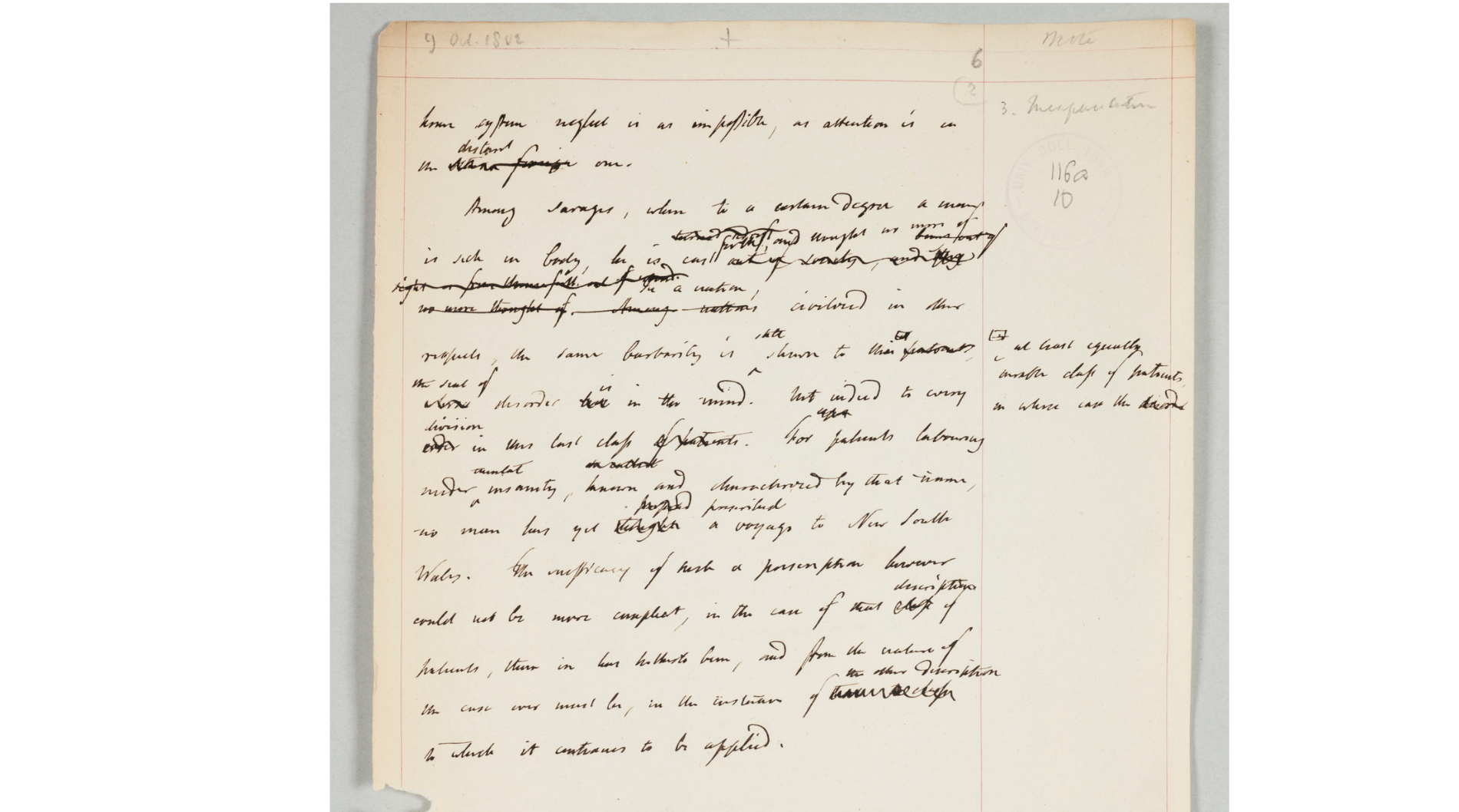Module 6: Primary Sources
1. Jeremy Bentham: manuscript JB/116/010/001 #
This manuscript page was written by the philosopher and jurist Jeremy Bentham (1748–1832).
Since this is a prose text, the basic structural units are encoded as paragraphs (<p>), with line breaks encoded as <lb> where they occur. Marginal notes are encoded with the <note> element; the note occurring on the sixth line in this example contains a simple deletion (the final word “disorder”), which is marked with the <del> element. This manuscript contains many deletions and additions. Some are simple, such as the addition of the word “still” in the phrase “the same barbarity is still shown” on line 6. This is indicated in the encoding by wrapping the added content in a <add> element. More often, deletions and additions occur in combination, in which case the transcriber tries to reflect their order in the nesting of <del> and <add> elements. For example:
This fragment is marked as an addition. Yet, Bentham had emended this addition by adding the phrase “turned adrift” (as a second-level addition). Later, he canceled this addition by deleting it again: that’s why this phrase is encoded inside <add>, with a nesting <del>, indicating that this added text had been deleted entirely. Further, at the end of this fragment, another addition is indicated with an <add> element. Again, this entire second-level addition had been deleted. Yet, since the encoder could not decipher the deleted text anymore, this is indicated by the empty <gap> element, which signals that text was present on the manuscript, but left out from the transcription. In order to record why the transcriber had decided to omit this text, a @reason attribute could have been provided on <gap> (with a value such as "illegible").
Where text could still be transcribed, but the encoder is not certain of the reading, this reading is recorded in an <unclear> element, as is the case with the word “that,” occurring in a deletion on the last but one line.
Finally, when the encoder spotted obvious mistakes, these have been identified with the <sic> element, as is the case with the word “compleat.” The encoder could equally have provided a correction by wrapping both the incorrect form (<sic>) and correction (<corr>) inside a <choice> element:
Bibliography
- Bentham, Jeremy. 1802. “Manuscript JB/116/010/001.” Manuscript encoded and made available by the Transcribe Bentham project at https://transcribe-bentham.ucl.ac.uk/td/JB/116/010/001.
- Whitman, Walt 1890. “After the Argument.” Manuscript encoded and made available by the Walt Whitman Archive at https://www.whitmanarchive.org/manuscripts/transcriptions/loc.00001.html.



